
Mission One Environmental Monitoring Results Available
Back to updatesThe Ocean Cleanup is developing advanced technologies to rid the world’s oceans of plastic. The passive drifting system, also known as System 001 or “Wilson,” was deployed in the Great Pacific Garbage Patch, located roughly midway between California and Hawaii, for 116 days. During this time, a team of scientists and experts conducted extensive monitoring and observation campaigns to understand any possible environmental impact of System 001 and minimize any potential harm to marine life.
Although little is known about this area, thus further observation is required, preliminary results show minimal effects on the surrounding marine environment. In this post, we will delineate our preparations and monitoring efforts as well as our conclusions from these efforts.

Preparations
With the aim of protecting the environment from the negative impacts of persistent plastic pollution, we advance carefully while trying to predict the effects of our actions on nature. To thoroughly assess potential impacts of this new technology, and to identify mitigations measures aimed at reducing or eliminating any significant environmental impact, we voluntarily conducted an Environmental Impact Assessment (EIA), in collaboration with an independent party (CSA Ocean Science, USA). In addition to the EIA, an Environmental Management Plan (EMP) was established to ensure proper monitoring of the environment surrounding System 001.
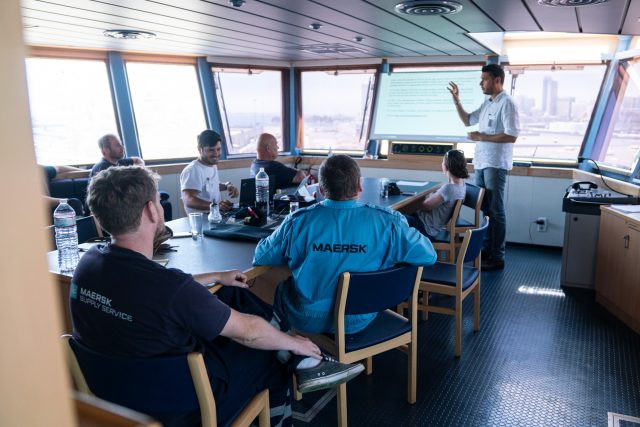
In preparation for the environmental monitoring campaign, The Ocean Cleanup team and mission partners received several theoretical and practical trainings with experts from the NOAA Fisheries Science Center in San Diego, The Marine Mammal Center in Sausalito, and The Bird Rescue Center in Santa Rosa (all in California, USA). These trainings focused on the recognition of marine animals and understanding their behavior as well as instruction on data collection procedures. Additionally, the team received training for handling and rescue procedures for distressed or entangled marine animals.
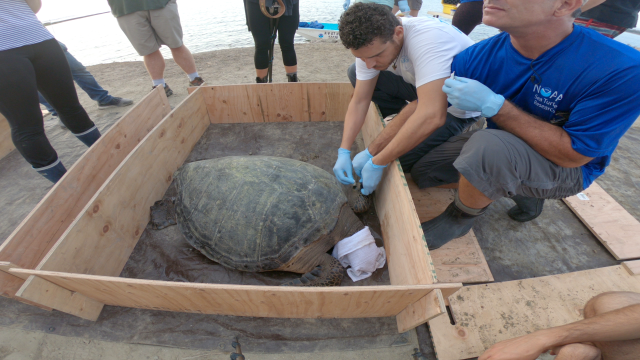
Monitoring efforts
Starting from the date of launch of System 001, The Ocean Cleanup staff and independent observers of Seiche Group Ltd. performed daily monitoring of the environment surrounding the barrier during the towing of the system, offshore installations, and deployment operations.
These monitoring efforts were conducted using visual observations at and below the surface with acoustic monitoring. Remotely Operated Vehicles and GoPro cameras were used to spot marine animals that could be moving in the proximity of the system. These inspections included the observation of protected species (marine mammals, birds, sea turtles), fish and plankton communities. The aforementioned activities were performed as part of the routine daily inspection, using different methods depending on weather conditions.
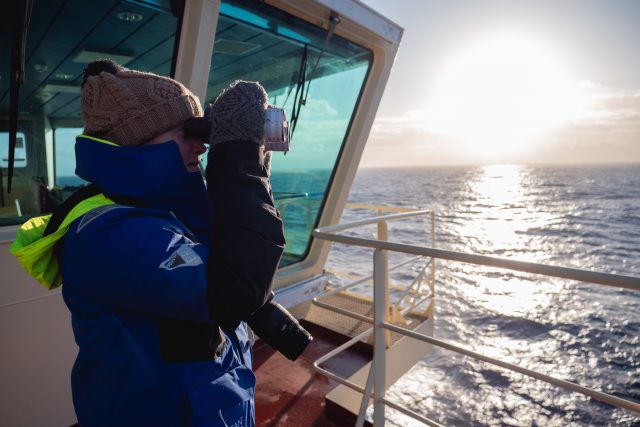
Monitoring by the numbers
The following figures summarize the at-sea monitoring efforts of System 001:
- 1045 hours of visual and acoustic monitoring for protected species (including marine mammals, sea turtles, and various birds), over a total of 141 days, of which ± 1012 hours of direct visual observation and ±32 hours of Passive Acoustic Monitoring (PAM)
-
200+ visual inspections performed over the 116 days of System 001 in operational configuration (U-shape). Of which:
- 150 drone flights – each drone flight would carry a 4K camera live-streaming and recording at low and high altitudes
- 56 manned inspections with a support vessel – while engineers and biologists would conduct direct visual observations of the system and the waters within and around it, they would also record above- and underwater footage
[31 days to launch] Meanwhile in Rotterdam, the research team is gearing up for a thorough data collection expedition, which will be running during the System 001 deployment. pic.twitter.com/ye0mDazzxp
— The Ocean Cleanup (@TheOceanCleanup) August 8, 2018

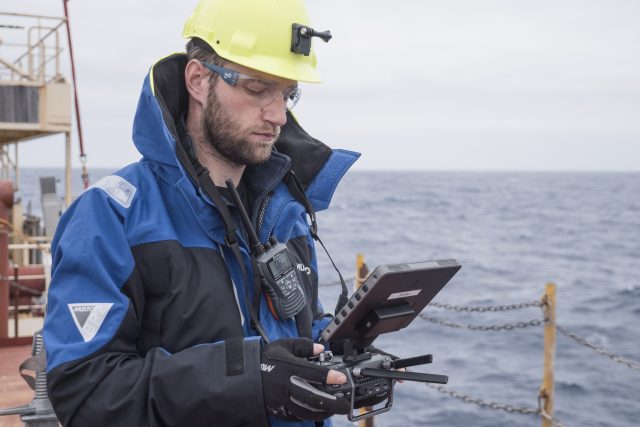
- 49 days of remotely operated monitoring carried out via the AutoNaut, Unmanned Surface Vessel (USV), using wave motion to precisely and silently move within and outside the system. When in use, it would collect wave and current data, and other atmospheric and water parameters, including dissolved organic matter and Chlorophyll α concentration (using a Sonde YSI EXO2). To visually inspect the environment surrounding the system, the AutoNaut was also equipped with live streaming via under- and above water cameras.
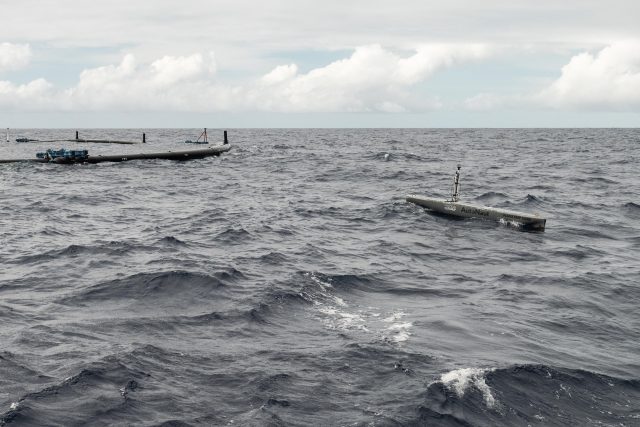
- 5 M3i+ Ecosounder buoys were connected to the system in operational configuration to continuously monitor potential fish aggregation as far as 200 meters below the surface.
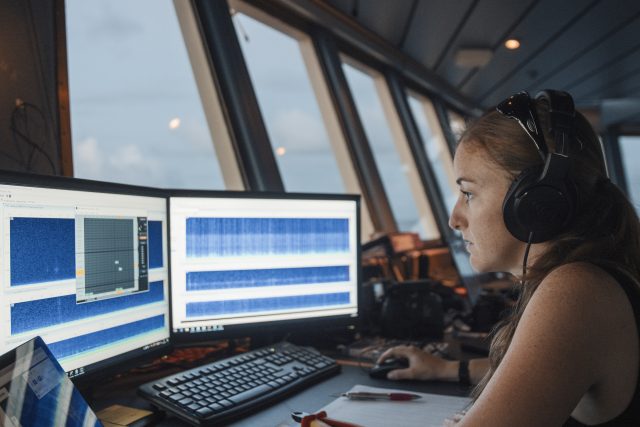
Daily, the scientists and engineers aboard the vessel would review the collected footage and data to ensure that any critical impact would be quickly addressed. A deeper analysis of all collected data has been performed at a later stage with the scope of understanding System 001’s behavior, performance, and impact on the environment, while situated in the ocean environment.
System 001 Mosaic
To test how drones record the system and to collect visual data of the system in its complexity, many aerial photos were taken of System 001. The imagery was used to monitor plastic accumulation as well as animal presence around the system. We could also track the shape and behavior of the system with this footage. Using these high-resolution photos, we created a mosaic to give a scope of how the monitoring was conducted.
The Ocean Cleanup would like to thank Terra Drone Europe for providing the necessary training for creating aerial imagery in an offshore environment. See full mosaic here.
Mosaic composed of multiple aerial photos taken by a DJI M210 with an X4S camera, 50 meters above sea. The monitoring vessel Maersk Transporter can be spotted on the top left side of the system.
Results
Visual observations have shown that marine mammals and other marine animals have passed in the vicinity of or underneath System 001. The animals remained in the area from minutes to days (the latter exclusively for birds) before diving in deeper waters, swimming away, or flying away in other directions, after which, these animals were not spotted again. No critical interaction was observed between the animals and the three-meter underwater screen, nor with the closing lines used for shaping the system.
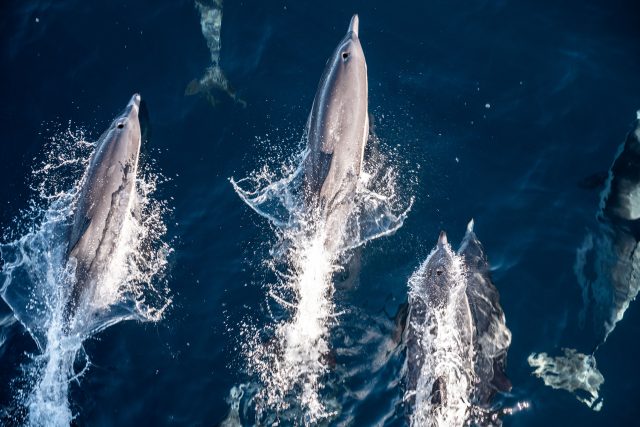
Protected species
In total, there were 63 sightings of protected species, most taking place during tow, near the coast and the remainder occurring during monitoring in the patch:
- 62 marine mammals were spotted: of these, 52 whales (including 5 humpback whales, 1 fin whale, and 1 adult sei whale), 7 pinnipeds (including 3 California sea lions), 2 marine fissipeds were identified, and 1 unknown marine mammal
- 1 recorded species was an unidentified sea turtle
Birds
The following species of birds were recorded, including:
- Albatross
- Osprey
- Storm petrel
- Tropicbird
- Sanderling
- Booby Shearwater
Fish
Small groups of dolphinfish, yellowtail, red snappers, sardines, pilot fish, and other fish species were recorded swimming in the vicinity of and underneath the system. Fish presence was also well observed in close proximity to ghost nets and plastic debris (including those encountered far from the system). In some cases, frogfish and other pelagic fish were found taking shelter inside nets and plastic debris.
Pelagic and Neustonic Plankton
We did not observe any recurring accumulations of pelagic and/or neustonic plankton. One recording, during uncommon weather conditions (wind < 1 knot, still waters, following heavy storms), a small accumulation of Velella velella (< 100 count) occurred around and on top of the plastic debris collected by the barrier. This aggregation remained visible for a limited time period (< 6 hours); most Velella dispersed when wind speeds increased. Phytoplankton Neutrally buoyant eggs were never observed floating at surface and analyses of the Chlorophyll α concentration in the water did not suggest any phytoplankton abundance within the system, compared to open waters.
Biofouling
Once the system was recovered in Hilo Bay, Hawaii, a full characterization of the system’s biofouling was performed by volunteers of the Division of Aquatic Resources (DAR). Soft biofouling (i.e. green algae) and hard biofouling (i.e. gooseneck barnacles) occurred on various locations of the system, primarily on those permanently immersed in water. Scaly rock crabs were also found on the system.
Conclusion
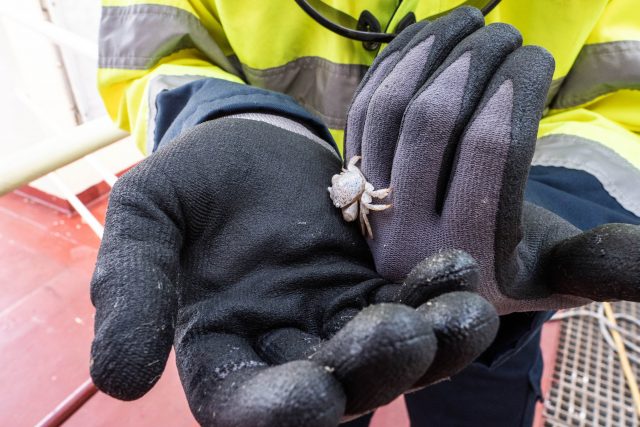
During the four-month environmental monitoring campaign of System 001, we did not observe any substantial interference with System 001 and the ocean ecosystem and/or marine life; nor did we observe any entanglement or entrapment of marine animals or protected species. All observed species in the proximity of the system were able to freely swim around and underneath the system. Impact on plankton species and macrofauna communities was far lower than anticipated in the EIA.
It is important to note that the open ocean and, more specifically, the Great Pacific Garbage Patch are largely unstudied; hence, limited data was available when preparing our EMP. Being a first-of-its-kind deployment, we knew that performing a comprehensive monitoring of the ocean environment would be challenging and that it would require ad hoc adaptations and improvements. Overall, these observations did give us greater confidence in the EIA, considering its results projected minimal risk; while on-site monitoring confirmed and lowered this expected risk. Some lessons learned from these monitoring efforts have now been incorporated into the EMP, but, as always, we welcome additional suggestions and feedback.
Further research is needed in order to gain a greater understanding of the environment and the possible impacts and benefits of our technology in use; necessitating our team to return to the patch and reinstate monitoring efforts. That said, we hope these initial observations provide a greater scientific knowledge of the GPGP ecosystem.
We look forward to returning to the North Pacific and resuming our tests as well as our environmental monitoring program while continuing to work with the scientific community throughout these processes.


